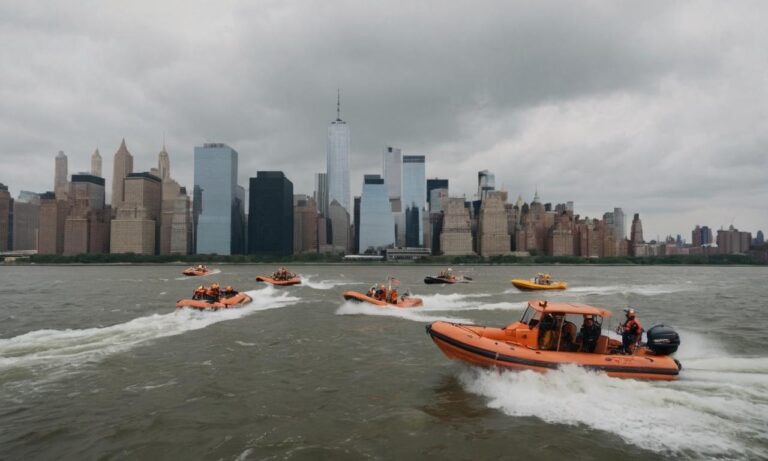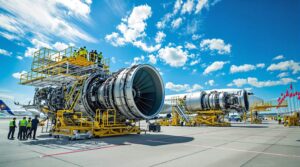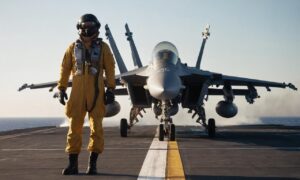The breathtaking incident of a plane landing in the Hudson River captured the world’s attention, showcasing the incredible skill and composure of the pilot faced with an unprecedented emergency.
The Miracle on the Hudson
Often referred to as the “Miracle on the Hudson,” the event unfolded on January 15, 2009, when US Airways Flight 1549, an Airbus A320, experienced a bird strike shortly after takeoff from New York City’s LaGuardia Airport.
As the plane lost both engines, Captain Chesley “Sully” Sullenberger and First Officer Jeffrey Skiles made a split-second decision that would save the lives of all 155 people on board. The pilots successfully executed an emergency landing on the icy waters of the Hudson River.
The Heroic Crew and Passengers
The quick thinking and precise actions of Captain Sullenberger and his crew prevented a potential catastrophe. The passengers also played a crucial role by following safety procedures and maintaining calm in the face of adversity.
Rescue efforts were swift, with nearby boats and ferries assisting in evacuating passengers from the floating aircraft. The incident showcased the importance of well-trained crews, effective emergency procedures, and the resilience of those involved.
Impact on Aviation Safety
The “Miracle on the Hudson” had a lasting impact on aviation safety and emergency response protocols. It prompted a reevaluation of bird strike prevention measures and reinforced the need for continuous training to handle unforeseen circumstances.
Regulatory authorities and aviation organizations worldwide drew lessons from this incident, contributing to the development of enhanced safety standards and procedures within the aviation industry.
Media Coverage and Public Reaction
The dramatic nature of the incident led to extensive media coverage and garnered widespread public interest. The story was later adapted into books and a feature film, further immortalizing the courage and skill displayed by Captain Sullenberger and his crew.
The “Miracle on the Hudson” became a symbol of hope, resilience, and the capabilities of aviation professionals in the face of extreme challenges.
The plane landing in the Hudson River remains an iconic moment in aviation history, demonstrating the importance of quick thinking, preparedness, and effective teamwork. The event not only showcased the heroism of the crew but also prompted positive changes in aviation safety practices, ensuring a safer future for air travel.
Frequently Asked Questions
Here are some commonly asked questions about the plane landing in the Hudson River:
1. How often do bird strikes occur in aviation?
Bird strikes are relatively common in aviation, with thousands of incidents reported globally each year. Aviation authorities continually work on measures to mitigate the risks associated with bird strikes.
2. What safety measures are in place to prevent bird strikes?
Various safety measures are employed, including wildlife management around airports, use of radar systems to detect birds, and research into aircraft design to minimize the impact of bird strikes on engines.
3. How did the aviation industry improve emergency response after the incident?
Post the “Miracle on the Hudson,” the aviation industry implemented comprehensive training programs for pilots and crews to enhance emergency response capabilities. This incident prompted a global review of safety protocols and communication strategies.
Aviation Innovations and Technologies
Advancements in aviation technologies have played a significant role in enhancing safety and efficiency. From the development of more fuel-efficient engines to cutting-edge navigation systems, continuous innovation has made air travel safer and more sustainable.
| Technology | Impact on Aviation |
|---|---|
| Collision Avoidance Systems | Reduces the risk of mid-air collisions by providing real-time alerts to pilots about nearby aircraft. |
| Composite Materials | Lighter and stronger materials improve fuel efficiency and enhance the structural integrity of aircraft. |
| Advanced Weather Forecasting | Helps pilots plan routes to avoid adverse weather conditions, ensuring a smoother and safer flight. |
Future Trends in Aviation Safety
Looking ahead, the aviation industry continues to explore innovative solutions to further improve safety. Emerging technologies, such as artificial intelligence in aircraft systems and sustainable aviation fuels, are expected to shape the future of air travel.






